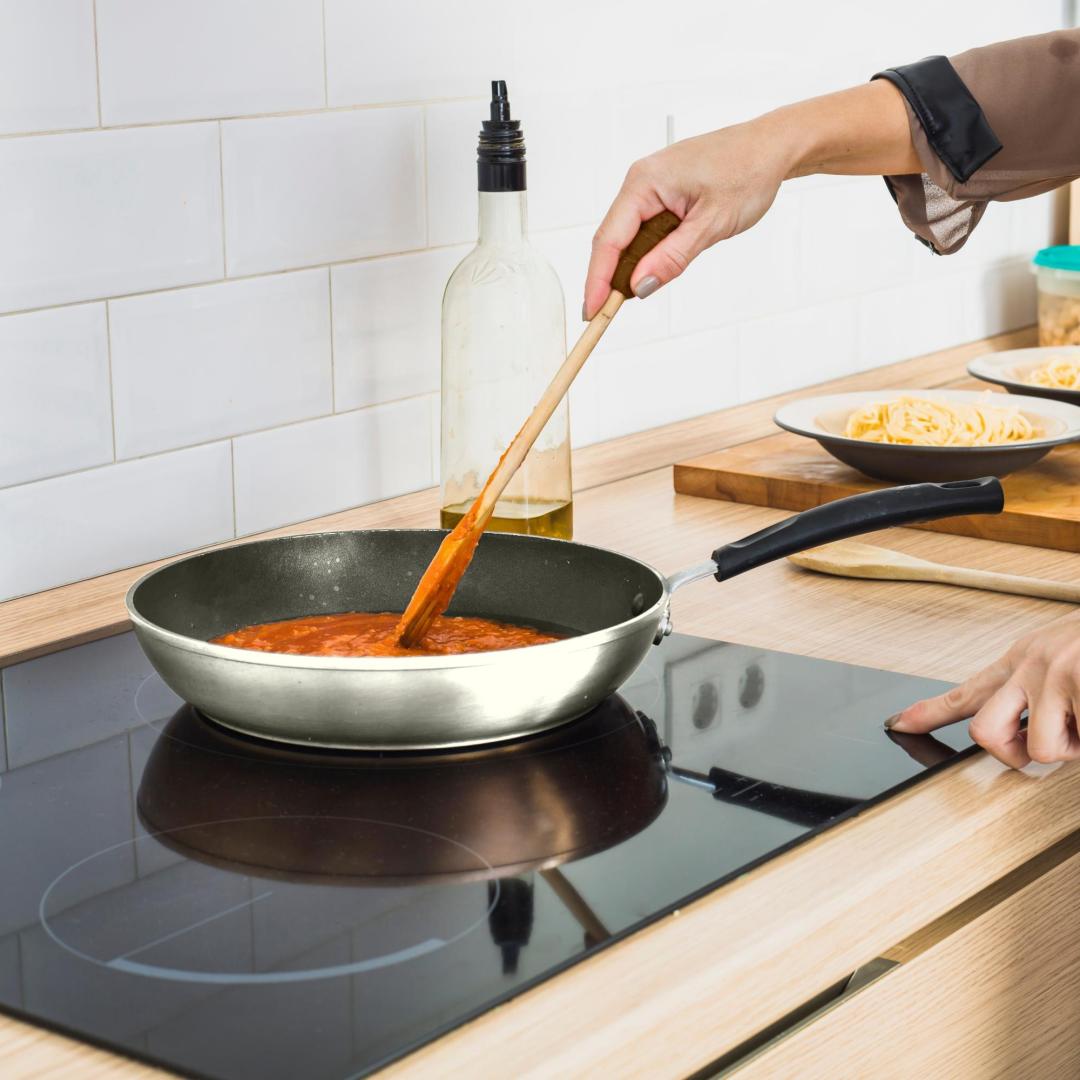Our manufacturing department has combined production experience with customer feedback and consulted with experts in the laboratory based on production experience to understand what measures you should take to ensure the safety of your pots and pans and still be able to fry perfect eggs in the next few years. Here are some measures you can take to make your nonstick cookware last longer.
1. Avoid using metal utensils.
Metal can scratch or damage the non-stick surface, causing food to stick and making the cookware difficult to clean. Additionally, you don't want to ingest small pieces of the coating. Once the surface of the cookware is damaged, you must discard it. To avoid this, replace metal spatulas and utensils with silicone, plastic, and wooden ones - they won't damage your pots and pans.
2. Stack pots and pans with heat-resistant mats.
The bottom of one pot can scratch the cooking surface of another. We sincerely remind you that stacking pots and pans or placing a lid inside a pot may invalidate the warranty. If there's no space and stacking is necessary, please place heat-resistant mats, dish towels, or other soft fabrics between the pots and pans to protect the cooking surfaces.
3. Avoid using cooking sprays.
Cooking sprays have a lower burning point than butter or oil and can leave sticky residue on the pan that is difficult to remove. We seriously remind you that using cooking spray on a non-stick coating will invalidate your warranty. If you prefer spraying a little oil on the pan before cooking, pour your preferred vegetable or olive oil into the spray bottle.
4. Do not heat nonstick cookware when it’s empty.
Unlike cast iron or cast aluminum cookware that can withstand the high temperatures needed for grilling steaks, heating an empty nonstick pan or pot can damage the coating and shorten its lifespan. Additionally, an overheated pan surface can produce smoke that is toxic to pet birds and harmful to humans.
5. Do not immerse hot pots and pans in water.
This is particularly important for nonstick cookware. Due to the principle of thermal expansion and contraction, the cookware body will contract rapidly, which may cause it to deform, crack, or develop fine cracks. Once the cookware is deformed or cracked, it becomes dangerous. Additionally, the significant temperature difference can produce a large amount of steam, and if there is oil or other flammable substances on the surface of the cookware, these substances may combine with the steam to form harmful fumes for a long time. We seriously remind you: allow the pans and pots to cool completely before cleaning.
6. Reduce the number of times you put nonstick cookware in the dishwasher.
This is especially true for ceramic pots and pans with detachable handle, even if they are labeled as dishwasher-safe. We can tell you that not all dishwasher detergents are the same. High temperatures and harsh detergents can damage the non-stick surface and the exterior of the pot. If the dishwasher uses very high heat or harsh detergents, this may cause the non-stick surface to dry out. While using the dishwasher occasionally can save on cleaning time and provide convenience, we recommend hand washing ceramic pots and pans for gentler and more effective maintenance.
7. Carefully clean the pan.
Non-stick cookware are very easy to clean, so we no longer test them for ease of cleaning in the lab. Avoid using abrasive pads or sponges, as they can scratch the surface of the pan. All you need is a regular sponge, soap, and water. Don't oversimplify the cleaning process. If you find that the cookware is heavily greased, apply a paste made of baking soda and water, let it sit for 24 hours, and then rinse it off. Most of the time, this will restore the non-stick properties to a certain extent. Additionally, avoid using paper towels to clean non-stick pans, as they may leave food residue, causing the pan to smoke and burn when used again.
Undeniably, regardless of the coating or material of your pots and pans, their surfaces will deteriorate over time, especially if you are not careful with them. This means paying attention to the type of cooking utensils you use, the oil for cooking, how to clean the pots and pans, and of course, the maintenance methods. If your pots and pans are irreparable and you are looking for new ones, please read our selection of non-stick cookware.
